Create a Food Forest
While many of our favorite vegetables are annuals, anyone who’s put out a garden knows how much work they require. Planting, pruning, watering, harvesting, picking off bugs–the list goes on. If you’re not afraid to branch out from the typical kitchen garden players, there’s another grow your own option with an arguably higher ROI.
What is a food forest?
A food forest is a low-maintenance permaculture system that mimics nature. Various microclimates within the system allows for rich diversity of plant life and symbiotic partnerships between different species.
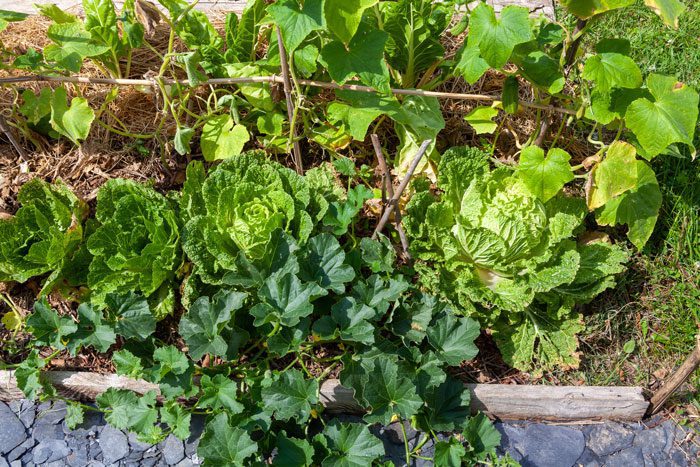
Food forests are designed to be self-sustaining over time. While planting and maintaining young trees and shrubs can be labor-intensive, a mature food forest won’t have watering, fertilizing, or pest control needs. After several seasons these plants will be producing food without any extra effort on your part.
Plus, where traditional agriculture has proved to be detrimental to the environment, food forests are a major benefit for the planet. Weed-suppressing plants eliminate the use of chemical weed control, trees sequester carbon and moderate temperatures, and forest biodiversity provides habitat for insects and animals.
Layers of a food forest
Just like most forests have a canopy made up of tall trees, an understory of shorter trees and shrubs, and low-growing plants, you’ll want to create a similar layering system in a food forest.
Canopy
The tallest layer, a food forest canopy, might contain nut trees, especially walnut, chestnut, and hazelnut. Aside from providing food, the purpose of a canopy is to provide protection and shade for the plants underneath.
Understory
Next you have the sub-canopy, or understory. Somewhat shorter than the canopy, most fruit trees fit into this category, including apples, pears, and cherries.
Shrub
Underneath the subcanopy, the shrub layer thrives. Brambles and bushes comprise this layer, including blueberries, raspberries, blackberries, currants, and elderberries.
Herbaceous
After the understory comes the herbaceous layer. Most perennial vegetables fall into this category: a grouping of non-woody plants that seldom grow more than four feet tall. One exception to this rule is artichoke, which grows upwards of six feet! Asparagus, garlic, and many leafy green herbs thrive at ground level.
Ground cover
An easily overlooked layer, groundcover has several essential functions in a food forest: to suppress weeds, retain water, and slow erosion. In a mature food forest with abundant groundcover you shouldn’t encounter many weeds. Low-growing, spreading plants like strawberries and creeping mint are great groundcover cultivars.
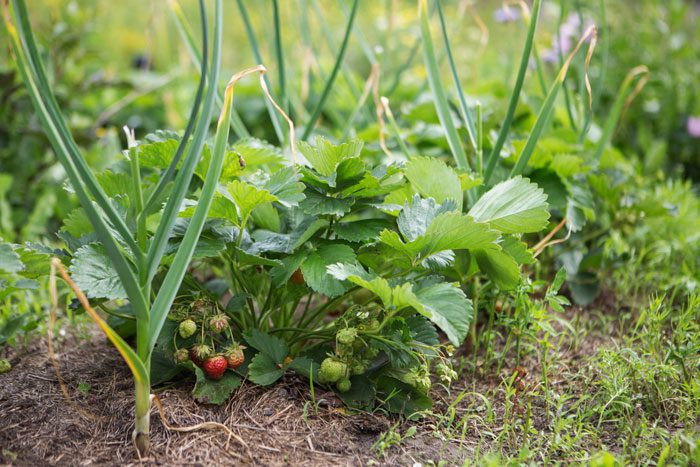
Vines
Most plants in a food forest grow horizontally; vines are the one vertical layer. Beans, peas, tomatoes, cucumbers–any plant that needs trellising–are considered vines. Most vines are grown as annuals, in part because of climate restrictions as well as to control their spread.
Underground
The last layer of a food forest is the underground layer, containing root crops. Other than providing us with delicious, nutrient-dense vegetables, root crops help aerate the soil by breaking up compacted dirt and large rocks into smaller pieces.
9 Unique Perennial Vegetables for Your Food Forest
Ok, so not all the following are truly vegetables, nor are all strictly perennial (some are biennial or even annual, depending on your climate). But in this list you’ll find more than a few edible plants that have the potential to produce for multiple seasons.
Choose a blend of vegetables, herbs, and fruits to fill out each layer of your food forest. Not only will this allow you to keep a variety of foods on your plate, but the diversity of species will result in a healthier food forest with fewer pests and diseases.
1. Asparagus
While not the easiest vegetable to start from seed, asparagus is a must-grow in any food forest. You’ll need full sun, well-draining soil, and plenty of patience since it’s recommended to wait at least three years before harvesting the spears. But the wait is worth it since asparagus will produce for a decade or more.
Asparagus has a history of cultivation for nutritional and medicinal use. Rich in vitamins and antioxidants, asparagus is one of the first green vegetables of spring and serves as a tonic to beat winter’s blues.
Mary Washington is our favorite heirloom variety, but hybrid UC-157 F2 is popular with market growers for its versatility. While asparagus spears are typically harvested between six and eight inches tall, if left alone the plants can easily grow to six feet or more.

2. Rhubarb
What’s a food forest without a rhubarb patch? One of the better-known perennial vegetables, rhubarb is a staple in the summertime garden. When mixed with strawberries, rhubarb makes a delicious pie filling or jam.
The cherry-red stalks of Victoria’s Rhubarb are as beautiful as they are tasty, and the plant’s overall hardiness makes it a great choice for growers in cool, wet climates. Reaching between three and five feet tall (and nearly as wide) at maturity, rhubarb is quite prolific so you may not need as many plants as you think.
3. Artichoke
How about adding an edible weed to your garden?
Ok, so no one really considers artichoke a weed. But did you know that this prized perennial vegetable is actually closely related to the bull thistle? In fact, the edible part of an artichoke is really nothing more than a green flower bud.
Some love ‘em, some hate ‘em, but artichokes are a nutritious and highly productive perennial vegetable worth incorporating into your food forest.
Artichokes thrive in cool, wet climates and will produce for about six years before needing to be replaced. Artichokes overwinter without issue in Zones 7 – 11; growers in colder climates can grow artichokes as annuals.
Nutritionally, artichokes are rich in essential nutrients, antioxidants, and fiber. Eating artichokes regularly has positive effects on the digestive system, cholesterol, and heart health.
Heirloom Green Globe is our best-selling variety, but Purple Italian Globe is gaining popularity for its tender texture and superior taste.
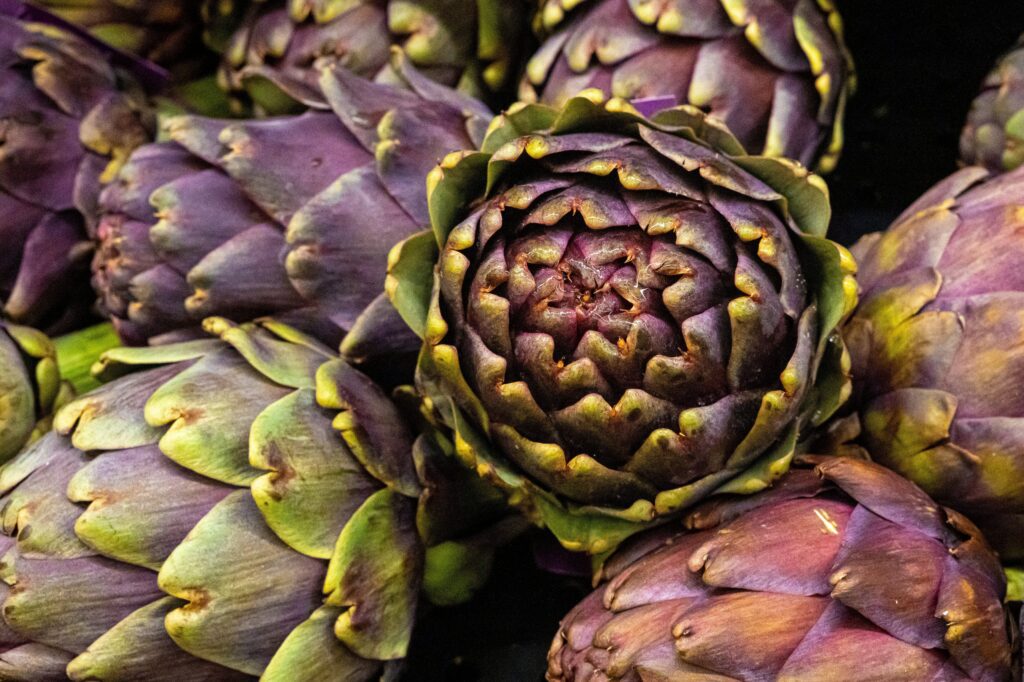
4. Goji
Also called Chinese wolfberry, goji berries are the bright red-orange fruit of a nightshade native to East Asia.
Goji berries have recently gained attention as a superfruit. Rich in antioxidants, many attribute the tiny red berries with health-enhancing and age-defying properties.
Drought and heat tolerant, goji is an excellent choice for southern gardens with hot summers and mild winters, especially Zones 4 – 7. In ideal conditions goji berries can reach 12 feet tall!
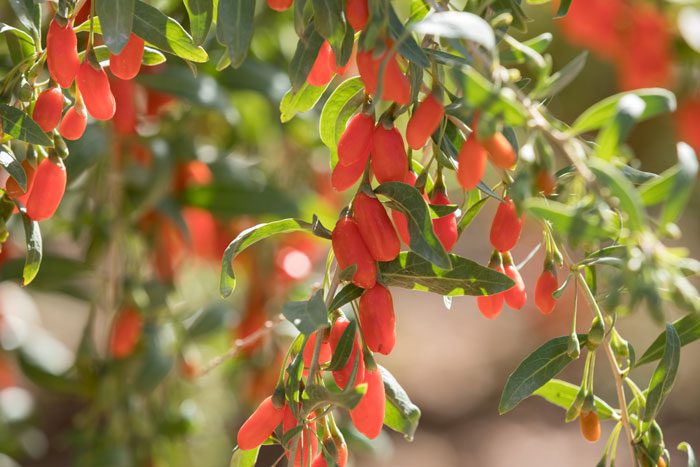
5. Salsify
You may know it as oyster plant or you may not know it at all, but in our opinion salsify is an underrated root crop. Closely related to dandelion, all parts of the plant are edible, though the real prize are the tapered white roots that become sweet after frost.
Though salsify may look more like a parsnip, its flavor is often compared to oysters, artichokes, and asparagus. Rich in nutrients and fiber, eating salsify regularly may improve blood pressure and blood sugar, digestion, skin and hair health, and general immunity.
Technically a biennial, sow salsify in the spring and allow it to grow a full year before harvesting in fall and winter. Salsify reseeds so prolifically that once you’ve sown it once, it’s unlikely that you’ll need to sow again.
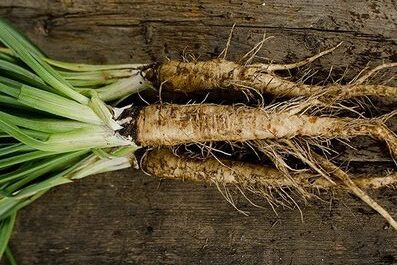
6. Sorrel
Move over, spinach: there’s a new leafy green on the block. Versatile as it is delicious, sorrel (or dock) can be eaten a number of ways—from tossed in a salad to simmered in a sauce, or even dried and steeped to make herbal tea.
Sorrel has a lemony flavor, adding a citrus-y acidity to any culinary dish. Medicinally, sorrel has been linked to a healthy digestive system and reduced inflammation.
7. Fennel
While not everyone’s cup of tea, fennel is an easy-to-grow perennial herb with a flavor akin to licorice. The white bulbous stem can be chopped and sautéed or roasted, and the fern-like leaves can be added to salads or used to flavor soups and other dishes.

8. Strawberries
Ok, maybe strawberries aren’t the most exotic food crop, but they’re a must-grow in any food forest!
If the tantalizingly sweet taste of biting into a fresh strawberry isn’t enough to convince you to grow your own, maybe science will: strawberries are rich in vitamin C and cancer-fighting antioxidants, so consuming them often is sure to boost your overall immunity.
Strawberries produce the sweetest fruit in full sun, so while shaded strawberry plants will still spread to fill an area, you’ll find fewer fruits than if you planted those same vines in the sun.
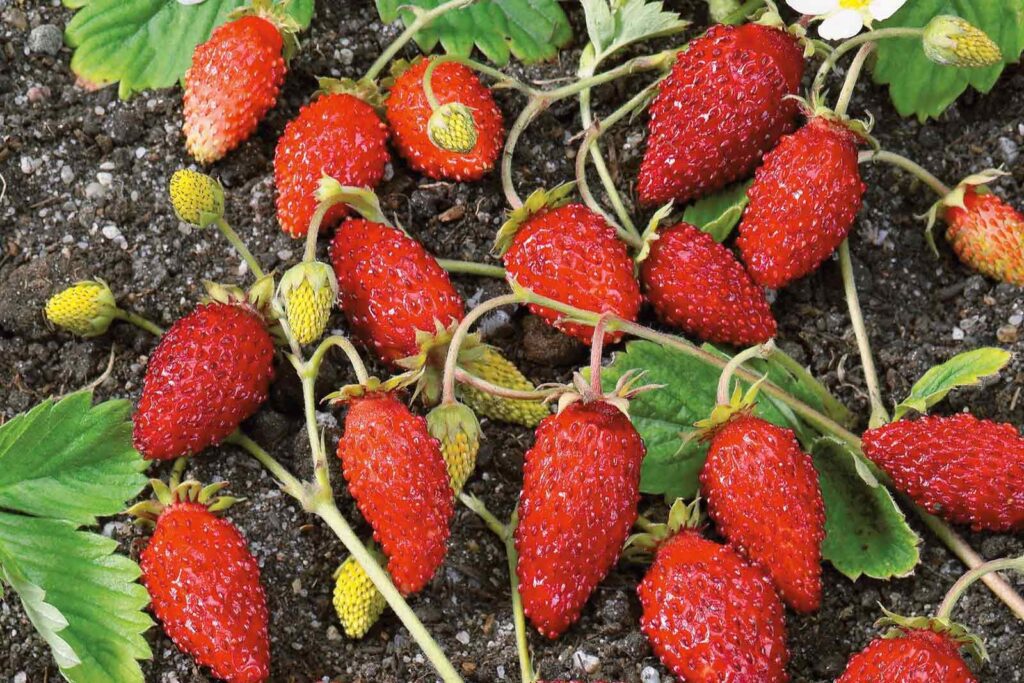
9. Coffee
If coffee is essential to your morning ritual, you’ll be thrilled to find out that you can grow coffee trees in your food forest!
Coffee beans are technically the seeds from coffee berries, which ripen from green to bright red to nearly black. Once harvested, the seeds are dried, roasted, and ground into coffee as we know it.
Coffee plants are perennial plant in zones 9 – 13, but growers in colder climates can grow their plants in containers and bring them indoors for the winter.
Coffee plants take about four years to reach maturity, at which point they will start producing white flowers and berries. Outdoors, coffee trees may grow 12 feet or more; cultivated in containers and pruned periodically, plants reach between four and six feet tall.
Become a Homegrown Foodie
Nut trees and fruit shrubs are the common players in most food forests, but they’re far from the only options. Try your hand at growing these unique perennials and demonstrate your aptitude for gardening (and inner foodie).
What are you waiting for? Some of these plants take a few seasons to get established, so get started today. Planting season is upon us, and you can shop the full collection of Perennial Herb Seeds here.